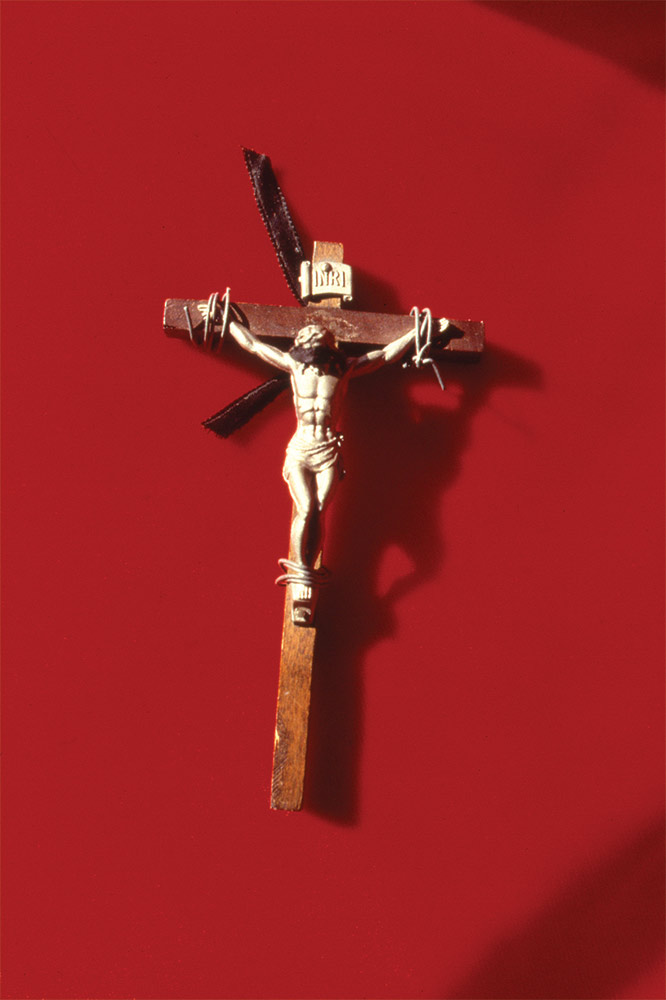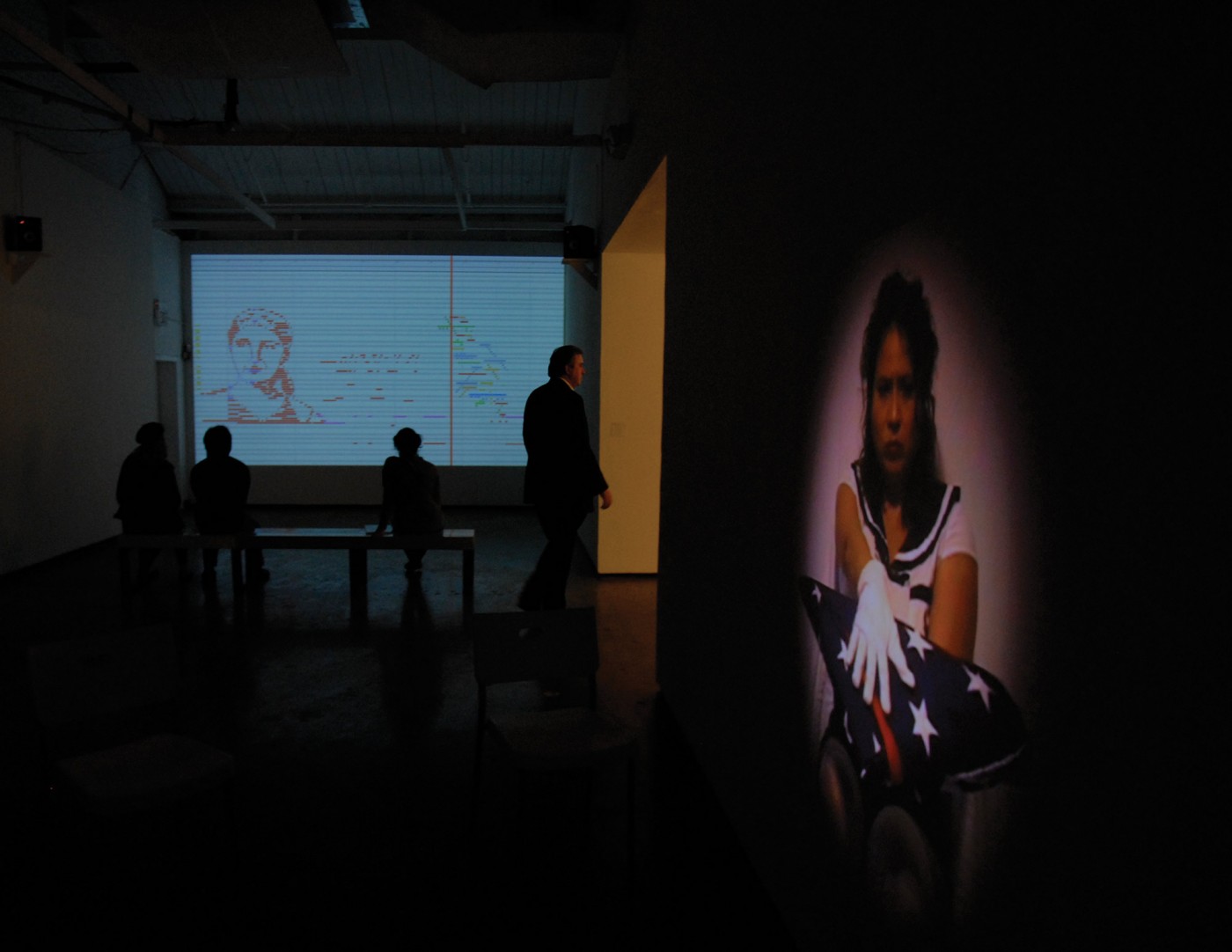Lamb of Goddesses
Who taketh away the sins of the world
Have mercy on us women
The terrestrial goddesses, who we know existed in Paleolithic times before monotheism and patriarchy, were not the lambs of any god for thousands of years. They were not objects of sacrifice to a superior god. The idea of the Lamb of God services another idea that precedes and that is superior to it: the idea of original sin, from which, we are told, Jesus Christ came to redeem us by shedding his blood on the cross. Other than their sad little figures locked in the glass cases of some museums, only a memory of phylogenetic transmission remains of these primeval goddesses. Their cult has deteriorated in the face of a masculine and more powerful god. From a certain moment on, many goddesses were made into lambs, sacrificed one by one in the name of gods, as well as rude and punishing warriors from whom kings, shamans, priests, theocrats, and jurists gradually “acquired via a direct line” laws that ordered and enslaved men and women in various ways. Nonetheless, perhaps because they realized how arduous the eradication of monotheism and all other ancestral practices like the adoration of goddesses would be, the Catholic branch of Christianity reduced the cult to only one figure. Mary, Mother of God, despite the fact that God’s son did not talk about her in the Gospels, and even though the New Testament barely mentions her, arose as a diminished goddess, a servant condemned to virginity and obedience. With her, the model of woman and mother was established. For too many centuries, this model of the virgin mother, the mother who is sinful just for being a woman, has been propelled forward. Yet this mother also carries Eve in her. The Rosaria––a female rosary––emerges from Elia in contraposition to this celestial virgin, the slave to a god’s need for a womb, a god who wanted to be a father and to be born as a man because, having condemned all of his children to original sin, he decided to also burden them with the guilt for the death of his only son. The Rosaria, however, is not directed at that semi-goddess mother from the Gospels, but at all women: at the terrestrial mother that we are, with or without children; at the ideal of a slave virgin mother whom we grow up with and whom we despise. And if there is any act of mercy that the Rosaria asks of her, it is to not continue transmitting this model, one that persists as a result of the ideology of sin.
Holy Virgin of prostitutes
Mother of the goddess
The Rosaria is an apocryphal prayer that speaks of a pagan and prostitute virgin. The prayer speaks to us women who fornicate and conceive children through sex. For this and many other reasons, we become sinners: mothers of sons and daughters whom we, in our sorrow of sorrows, raise to perpetuate the patriarchy; mothers of goddess-daughters who we betray by teaching them slavery.
Mother most impure
Mother promiscuous
Mother whore
Mother maculate
Mother corrupt
As such, this mother, the owner of any attribute that might contradict the immaculateness of the Virgin, is the mother we know and the one we become by the grandiose synergy generated by the encounter between the patriarchy and the figure of the Virgin Mary created by Catholicism. Since that moment, as the Rosaria prayer invokes, we women have been in these circumstances: mother by obligation, dirty by nature, whores and promiscuous as daughters of Eve, corrupt and corrupters, dangerous and crazy by uterine impulses, sorrowful by mandate. There is no litany sufficiently long to describe the mother we are and the one we come from. We, moreover, offer a corrupt love, burdened by repressions assumed to be indispensable, when in fact they are someone else’s mandate, a love burdened by complicities in the most horrible forms of domination.
Mother insolent
Mother admirable
Mother of bad counsel
Mother most imprudent
Virgin deserving of compassion
Virgin deserving of praise
Virgin powerful
Virgin unfaithful
Yet despite all the attributes of this humiliated mother, the Rosaria is a necessary prayer that does not end in destruction. It insults this model mother as it simultaneously appeals to her strength, reproaches her for her pitiful role and reminds her of her capacity to rebel against the millennial mandates of obedience, chastity, and sorrow. Unlike the rosary, it is directed at a mother who is voluntarily a servant and happy with her punishment, a prayer that expresses the necessary hate for and necessary reconciliation with this mother that we have had and we have been.
Ideal of ambiguity
Seat of wisdom
Honor of the people
Model of contradiction
The prayer reveals the necessity of becoming aware. After the thousand storms we have endured, we ought to know that our mothers, those ambiguous mothers, fervent collaborators in an unjust model, enslaved and enslavers, carry in them, on a molecular level and next to the corrupted love and the broken vitality, the imperative of their liberation.
Despised rose
Strong as a tower
Beautiful as an ivory tower
Gate of heaven
Morning star
Thus, the existence of that despised rose––perhaps the only direct allusion to the virgin that the Rosaria contains––as the mother of a son who denied her by calling himself the son of man, coexists alongside the upright ivory woman and the morning light, both features so often hidden behind the supposedly tarnished petals, the ones turning the mother into a model of contradiction.
Health of the sick women
Refuge of sinful men
Comfort of the afflicted women
Help of pagan women
Because underneath, that is how we know her, as a healing goddess and, at the same time, as an accomplice to all that she represses while knowing deep down that the latter is not wrong. There is no refuge better or worse than the patriarchal mother, none safer or riskier. Giving this up hurts, heals, and sometimes allows us to return to her and see her for what she is, to see ourselves for what we are.
Queen of Matriarchs
Queen of Prophetesses
Queen of Apostlesses
Queen of women who do not live their faith
Queen of unchaste women
Queen of all saintly women
Therefore, one of the rosary’s fallacies is that of calling the Virgin the queen of the patriarchs, for there is no patriarch who could see a woman as a sovereign. Historically, where there have been female prophets, the patriarchs have seen a witch; where there have been female apostles, a madwoman. Saintly women, on the other hand, have been plentiful, sorrowful saints on their knees, with bodies denied of pleasure and joy on this earth, who have bet on a life after this life and thus have lost their lives.
Queen conceived with original sin
Queen assumed into heaven and hell
Queen of the most holy Rosaria
Queen of peace
Therefore, towards the end and for the sake of a possible redemption, the Rosaria does not leave any room for doubt and names who it adores and despises, the one whose original sin is that of continuing to compromise with her executioner and to accept hell as heaven.
Lamb of Goddesses
Who takest away the sins of the world
DO NOT GIVE US PEACE!

And, after describing the mother as tarnished and ambiguous as she is, then elevating her to the position of queen, the Rosaria turns again into what it was in the first three verses: a plea. Although in the beginning it begs for mercy, it finishes with a radical solution by imploring for change. And such change requires the absence of peace, inasmuch as peace, that peace that supposedly comes with the fulfillment of God and man’s law, is a despicable peace. Its price is too high because it is paid for by the surrender of dignity and of the liberty of thought, word, and work. It is lived only by omission.

